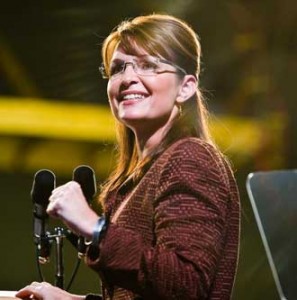
By Doug Sweet
We’re almost out of election season, and for many it can’t come soon enough. An economic meltdown might seem welcome by comparison. Agony aside, a prolonged period of political activity can prove instructive.
One thing the autumn of 08 has revealed is that when it comes to politics and the media, a double standard some would call sexist is alive and kicking.
Whether it is the familiar and faintly paternalistic use of “Hillary” in a headline instead of the more formal “Clinton,” or stories that focus on wardrobe choices (this extends to the brutal and detailed criticism of Michelle Obama’s red and black election night dress in the next day’s press) or the gleeful, indeed, savage way the media feasted on Sarah Palin’s shortcomings, one thing has seemed constant: Little or none of this would have been said or done about a man.
I can’t recall lengthy discussions about the cut of John McCain’s suits or the unnatural crispness of Barack Obama’s luminous white shirts. But there has been much written and said about Hillary Clinton’s pantsuits and Sarah Palin’s eyeglasses, hair, wardrobe and, according to one CBC blogger, “porn-star looks,” whatever those are.
(One exception to this rule comes from the 2006 Quebec provincial election when Jean Charest’s rumpled frumpiness was observed. It doesn’t seem to be an issue this time.)
While the media certainly had a field day with former U.S. vice-presidential candidate Dan Quayle, who, in retrospect, seems to have been head and shoulders above Palin in terms of qualification for higher office, I don’t think anyone cared where he shopped.
In a way, it’s not necessarily the media’s fault.
The focus on style over (or sometimes alongside) substance springs from a crucial difference between male and female politicians: the men essentially don a uniform; the women must exercise far, far greater choice in what they wear, how they present themselves. And women pay a heavy price if their choices are deemed improper. When it comes to women in political life, and that includes the wives, every reporter is reborn a fashion critic.
The male uniform means you’ll never get stories about the shape of Obama’s ankles the way snipers targeted Clinton’s “cankles,” and, unless he takes to wearing Hawaiian shirts in the National Assembly, Charest’s daily dressing decisions will never be as important as whether Pauline Marois has a big (and expensive, meaning extravagant, meaning out-of-touch-with-the-little-people) gold pin holding her pashmina in place.
(Oh, and would a male political leader be described as “un snob,” the way Marois’s own party apparatus has branded her? Arrogant, perhaps, as in the case of Michael Ignatieff or Pierre Trudeau, but probably not a snob, and never that kind of criticism from within.)
How much a public person spends on clothes is easily more evident for women than men; I know Brooks Brothers suits look good and that they’re expensive. But I defy most casual observers, and that would include the vast majority of voters, to, at a glance, distinguish between a $5,000 suit and a well-fitted $500 model. Don’t know, don’t care. A Louis Vuitton handbag, however, is a dead giveaway.
But what about Stephen Harper’s sweaters? The Canadian media wrote at length about the way the prime minister’s stylists tried to portray him as so much more warm and fuzzy than his public persona had heretofore suggested. It can be argued that here the story was more about campaign calculation and strategy than fashion; how the Tories were trying to trick us into believing the prime minister is actually a living, breathing human being who likes dogs and little kids. Until the sweater ads, we hadn’t really seen him that way.
And that means it was the party and not the prime minister who was making the wardrobe choices. Have you seen him in a sweater since Oct. 14?
It is not that media are dominated by men who have developed a sexist prism through which female candidates are viewed and presented. Some of the more devastating commentary on Palin, Clinton and Marois has come from females. It would seem more that the media’s view of women is a reflection of a broader, deeply imbedded and socialized double standard that evaluates men and women according to different criteria.
Male politicians, by donning the uniform and largely taking away the issue of fashion judgments, can then be evaluated more according to their performance and positions. Women, who have yet to escape the fashion-judgment issue, continue to be evaluated on those choices as well as on their platforms (not the shoes) and comportment.
It’s the old comparison between Ginger Rogers and Fred Astaire. She did everything he did, only backwards and in high heels.
Doug Sweet is Director of Media Relations for McGill.
